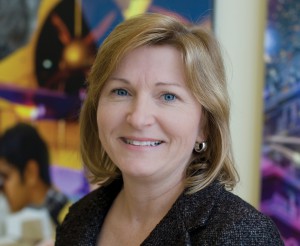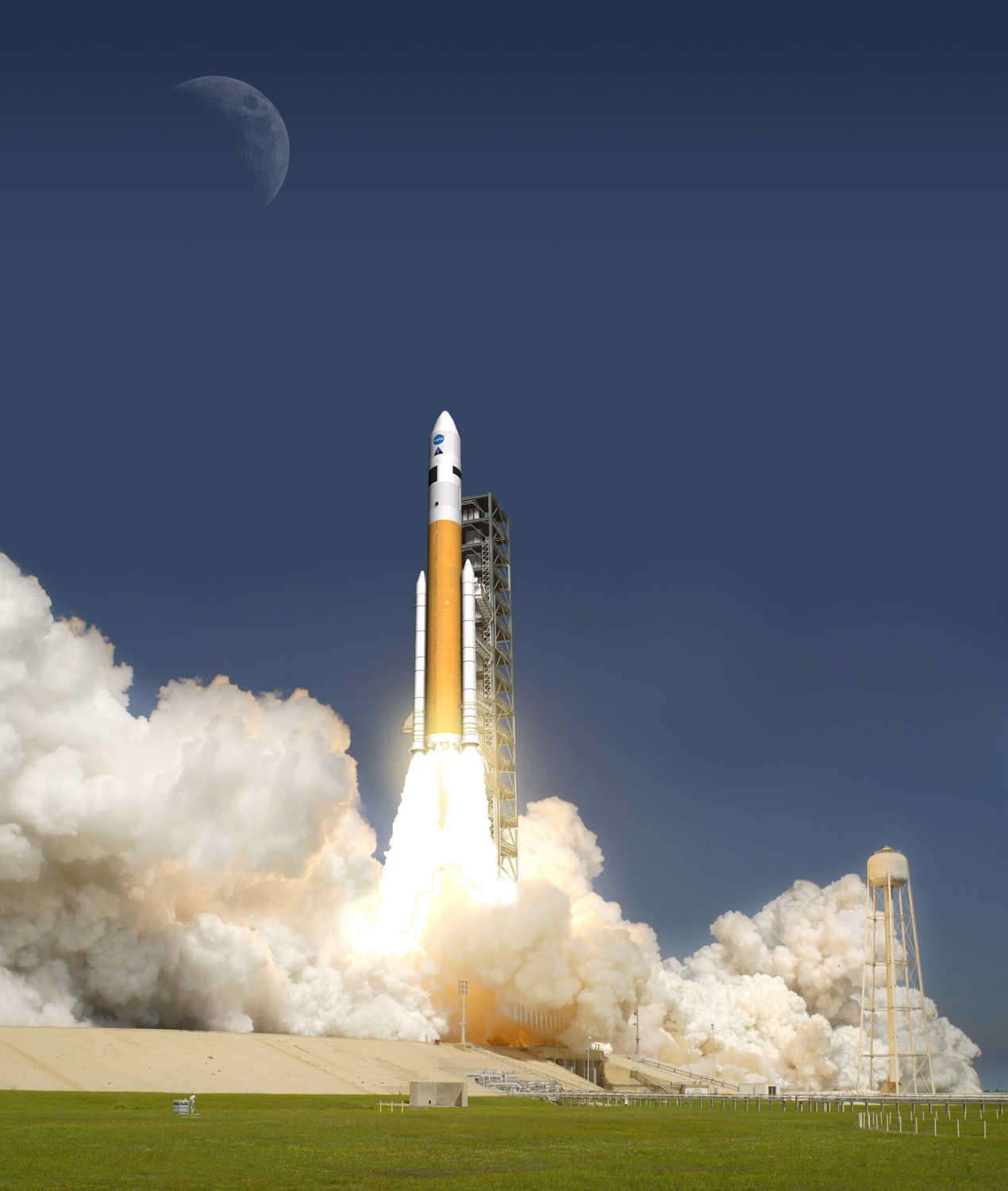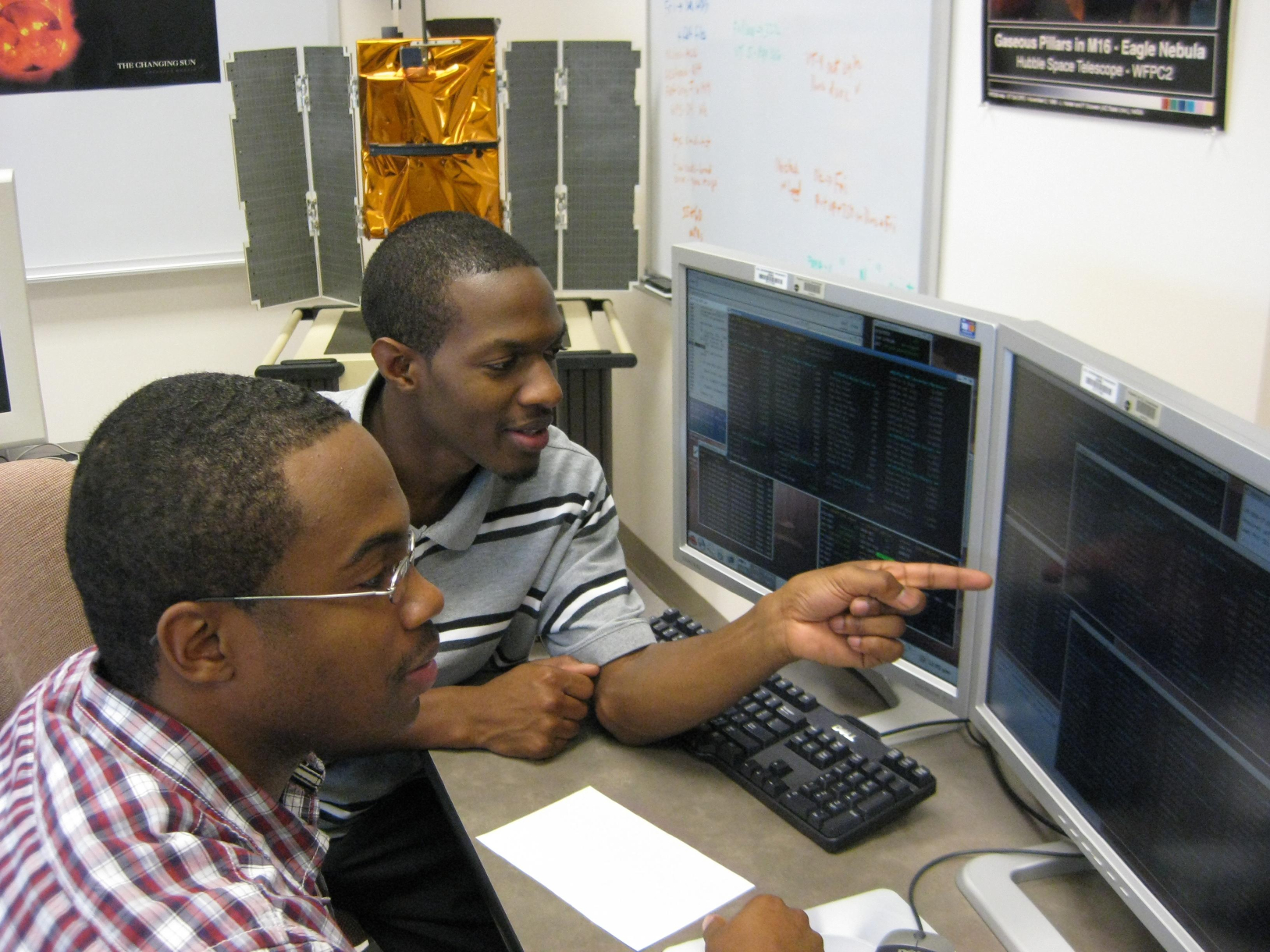By Ed Rogers
Ed Rogers, chief knowledge officer for the Goddard Space Flight Center, recently sat down with two center directors—Rob Strain of Goddard and Lesa Roe of Langley Research Center. He asked them about collaboration, partnerships, and how their centers are learning to work well together.
 ROGERS: Both of you come with some industry experience and knowledge of other NASA centers. What do you bring to the center director job that can help NASA and your respective centers meet the challenge of complex partnering?
ROGERS: Both of you come with some industry experience and knowledge of other NASA centers. What do you bring to the center director job that can help NASA and your respective centers meet the challenge of complex partnering?
STRAIN: I think that our missions in the future will all entail partnership involvement because of the size of the missions, the nature of international research, and the capabilities that industry and academia bring. The fact that I’ve had different sorts of roles in different organizations might help me see those multiple perspectives a little better.
ROE: My background includes working at multiple NASA centers—Johnson, Kennedy, and now Langley—which gives me an interesting mix in that it includes both space and research centers. I have also worked in industry. So I, like Rob, am able to think about multiple perspectives when I look at a challenge. I also see the tremendous value that the diversity of different organizations brings. Their solutions to problems are far superior to ones provided by isolated thinking.
STRAIN: I agree. Say, for example, we’re having a difference of opinion with somebody—another center, a partner in academia, a big-name PI [principal investigator], or an international partner. I start with, “What do you think they’re thinking? If you were in their shoes, how would you view this?” I would push to the point where I’ll ask people to make the case for the partner. If we have an external PI, for instance, I want them to think about, why do you suppose he’s angry, or why do you suppose she has this issue? Or if we’re debating issues on performance with a contractor, are they having problems with us? Often the answer is, “Hmm, I didn’t think about that.” Well, if you were them, what would you do? They go through this process, and then they say, “Okay, now I know what to do.”
ROE: Rob and I have a very similar approach when someone brings a problem up, especially a problem with another center or a partner. You have to put yourself in their shoes to find the best way forward. It is very easy to wallow in how bad the other organization is, but that gets you nowhere fast! It is very important to me to get all perceptions out in the open, jointly come up with a plan, and hold ourselves accountable to the plan.
ROGERS: It seems that there is some competition among centers, but it’s also in their best interest to cooperate. How do you deal with the competitive nature of NASA work?
 ROE: We are always looking to develop partnerships with other centers on projects whether there is competition or the work is directed to a particular center. Just as with industry, centers will sometimes partner or be competitors depending on the requirements for a specific opportunity. In either case, we are trying to assemble the best team and contribute in a way that will make the project successful. Mission success is NASA success—everyone really believes that inside. We just need to make sure we don’t let the way we organize ourselves get in the way of the commitment our people have to mission success.
ROE: We are always looking to develop partnerships with other centers on projects whether there is competition or the work is directed to a particular center. Just as with industry, centers will sometimes partner or be competitors depending on the requirements for a specific opportunity. In either case, we are trying to assemble the best team and contribute in a way that will make the project successful. Mission success is NASA success—everyone really believes that inside. We just need to make sure we don’t let the way we organize ourselves get in the way of the commitment our people have to mission success.
STRAIN: It’s important to remember that we’re not only competing intramurally within NASA, but also with industry and academia, and that keeps us sharp. I think if we didn’t have some component of competition, we might wake up one day and not be on that leading edge. I wouldn’t argue that we should swing down that continuum too far, because competition has an unproductive side, too. The place we’ve arrived at recently, where a good portion of the work is assigned and a smaller portion is competitive, strikes me as about the right balance.
ROGERS: Partnering between Goddard and Langley is not new. How have you approached Goddard in your current partnership on CLARREO [CLimate Absolute Radiance and REfractivity Observatory]? Are you applying lessons in this area of cooperation learned from past missions and, if so, how are you applying them?
ROE: Carefully [laughing]. We have had some hugely successful partnerships with GSFC [Goddard], but after our CALIPSO [Cloud-Aerosol Lidar and Infrared Pathfinder Satellite Observations] experience—where many lessons were learned the hard way—we wanted to start out right with the next joint mission. When it came along, Rob and I decided we needed some face-to-face discussions followed up with a memorandum of understanding defining roles and responsibilities. We had some sessions with both centers’ senior management teams, where we put all the concerns, fears, perceptions on the table. The teams worked to negotiate each center’s roles and responsibilities, with the focus on using each center’s capabilities to maximize the probability of project success. We documented them in the MOU [memorandum of understanding] between the centers, which was reviewed and signed by both centers’ senior management teams. We are also committed to holding all team members fully accountable for implementing the partnership agreed to in the MOU.
STRAIN: We actually wrote case studies on CALIPSO and STEREO [Solar TErrestrial RElations Observatory] that focus on the team-management aspects of the project, and we’ve learned some important lessons. CALIPSO, a mission jointly managed by Goddard and Langley, was marred, like STEREO—a mission run with APL [Applied Physics Laboratory]—by interorganizational strife. So when Goddard and Langley ended up in a partnership again, I called Lesa, and we had our organizations spend an entire day together to let it all hang out. I think it was therapeutic for everyone, if a bit awkward, but that’s how the real lessons get applied and not buried in half-truths. CALIPSO and STEREO are both successful missions, but everyone agreed that the way we got there left much to be desired. I’m sure we won’t get it perfect this time, but we’re certainly going to try to apply as many lessons as we can up front.
ROE: People at Langley and Goddard are applying the lessons we learned from CALIPSO, but this is not a situation where you can assign an action, check the box, and you are done. It is going to take focus by Rob and me and our leadership teams to make sure there is no fallback. During our Langley/GSFC meetings, we specifically discussed challenges we faced in our collaboration on CALIPSO. These ranged from unclear roles and responsibilities to poor communication between center senior management and with Headquarters. In the past, unclear roles generated confusion within the project team and mistrust between center leadership. We worked extremely hard to avoid these unproductive situations in crafting current partnerships, particularly for the CLARREO mission. We have had a fully integrated team leading up to MCR [mission concept review] involved in the design of the mission. Specifically, we organized the science team with a deputy project scientist at GSFC and scheduled biweekly telecons between the Langley Science director and the Goddard Earth Science Division director. This already has paid off during the discussion of a sensitive decision concerning adding an instrument to CLARREO. By working closely with GSFC management ahead of time, we were able to reach a joint recommendation that has been accepted by Headquarters. I sincerely believe we have established a strong partnership on CLARREO where everyone is focused on mission success. Both organizations have worked hard at clear and frequent communication at all levels, and we have made tremendous progress.
ROGERS: The lessons you two are talking about are not the usual lessons learned; you are talking about teaming and communication. Are people receptive to paying attention to these “soft” lessons?
STRAIN: Totally. When we actually got into how to execute this new mission, Langley brought their team up, and at first it was “you did this” and “you did that” and “we didn’t appreciate that.” Like I said, we really let it all hang out. And at the end people said, “Oh, I see your point,” and, “Well, yeah, I wouldn’t do it that way but I see your logic.” Our MOU includes a behavior clause. Lesa and I put in a clause about how we expect people to behave so that when the project gets into the thick of things, people will say, “The agreement wasn’t just you do this and I do that,” but, “This is how people ought to behave and follow some protocol.” There were some hard feelings left from previous missions. We said, “We can relive this, or we can do it differently.” I think we all decided to do things differently.
ROE: I agree with Rob. In addition to specifying the roles, we had to replan the project as agency requirements evolved and changed—the CALIPSO project began during the “faster, better, cheaper” era at NASA. What Langley proposed as a PI-led mission with limited insight and oversight of contractor activities and a partnership with CNES [the French Space Agency providing the spacecraft and one instrument] began to change after the Mars Polar Lander and Mars Climate Orbiter failures. One thing we are trying to apply with CLARREO is that the proposed resources must match the project plan, which must be consistent with current agency policies and requirements. Another lesson is recognizing the resources needed to manage a complicated partnership itself. With CALIPSO, we probably underestimated the added complexity and challenges of the partnership with CNES. Cultural differences, time zone differences, communication issues, ITAR [International Traffic in Arms Regulations], etc., led to many long telecons and meetings between the NASA and CNES teams to develop requirements and ensure they were met. That effort takes resources, and we want to plan for that kind of need in future partnerships. Although CLARREO may not have an international partner, we will be partnering with Goddard and maybe other centers, other government agencies such as the National Institute for Standards and Technology, universities, and industry. We must ensure that the project organizational structure and staffing plan account for the complexity driven by these partnerships and contracts and budget for them. Finally, leadership must focus the team on mission success beyond just center success. With CLARREO I believe the senior leadership at both centers is working very effectively and paying great attention to ensure each center is focused on mission success. We bring the best, most appropriate capabilities from each center to bear in order for CLARREO to be successful. We are committed to building a dedicated, highly motivated Langley/Goddard CLARREO team.
ROGERS: Where else do you see exciting partnerships shaping the future for NASA?
STRAIN: I’m excited about what Wallops is bringing, not just to Goddard—though that is great—and not even just to NASA, but to the broader community, because they will do commercial, scientific, and military missions at price points we don’t have access to today. Orbital Science picked Wallops to be the place where they’re going to develop their new rockets for crew resupply and also for Taurus 2.
ROE: We’ve had numerous successful partnerships with Wallops, including the recent Max Launch Abort System test for the new crew exploration vehicle. We utilize the Wallops Unpiloted Aerial Vehicle runway and range to conduct important flight controls research for the Aeronautics Research Mission Directorate. We also recently had a highly successful flight of a first-of-its-kind inflatable reentry vehicle on a sounding rocket from Wallops. This was the first flight demonstration of a technology that could enable the landing of much larger systems on Mars or returning spacecraft to Earth. So we have collaborated with Wallops to utilize their flight-test capabilities for research- and technology-demonstration activities. This is a great example of taking advantage of the capabilities at both centers to do something neither could do alone.
STRAIN: Lesa is absolutely correct—Wallops is a great example of getting more done by collaboration. Wallops could be for NASA, the commercial community, and the military the resource for cheap, midsize access to space, at price points of $50 million or $60 million, not the current $200 million. They’ve always done good work with balloons and suborbital missions. They’re very clever—they can do more with a dollar than anyone else, I think, at NASA. They pride themselves on it, and I love what they’re doing. It’s great being connected with Wallops, Virginia, and Langley. I think together NASA is a better place by having different ways of doing things all for the same goal: to better understand our Earth, our solar system, and ultimately our universe.
The CALIPSO and STEREO case studies mentioned are available on the Office of the Chief Knowledge Officer Web site at www.nasa.gov/goddard/ocko.







